Making 'Hakobi' Brushes
Making Your Own 'Hakobi'
A 'comic' version of this tutorial is here ...
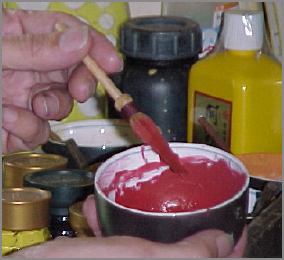
This summer, while we are staying in Japan with Dad, we are making a bunch of 'hakobi' for him. A hakobi is the thing that he uses to move a blob of the pigment over to the block. Hakobi actually means 'carrying stick', but it is also called 'tokibo', which means 'mixing stick'. Here is how we make them!
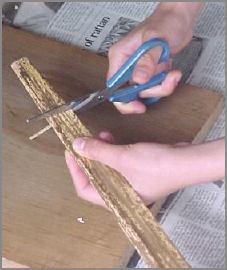
You start with a 'takenokawa' (bamboo sheath). Cut a piece about 7cm long from the base end. It is generally better to use the base because it has the strongest fibres, but you can still get good hakobi from the other parts of the sheath.
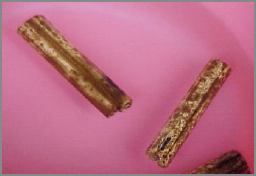
The pieces should be dropped into a bowl of water and soaked. You don't need to soak them so long, just five or ten minutes.

Here is one piece of bamboo, unrolled so you can see what it looks like. It is now ready for working.
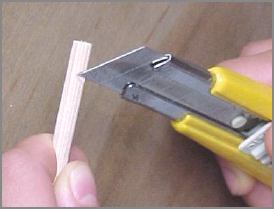
We make the handles from pieces of wooden chopsticks. Cut two notches on the stick (one on either side), about 1 centimetre from the end. This is to stop the bamboo from falling off the handle after it is tied on.
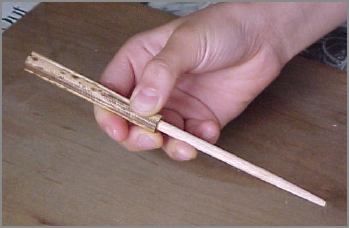
Roll the wet bamboo around the chopstick about 1 1/2 centimetres. It is now ready for tying.

It is easy to tie the string if one end is fastened to a hook on the bench. That way it can be pulled tightly while wrapping.
Now you start tying the string.
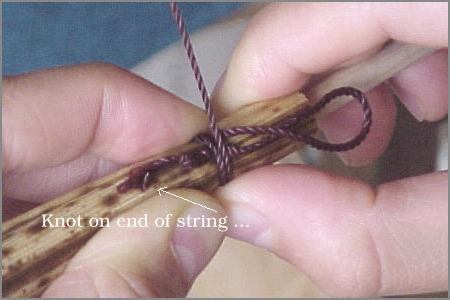
We know an interesting way to tie it, and Dad says that it is the same way that people tie 'flies' for fishing. You make a loop in the string, lay this on the bamboo, and then start rolling the string around and around. (If you put a knot on the end of the string, it will be easier to pull it later on.)

Each time you roll once, the loop gets more and more covered up. You really have to wrap tightly!
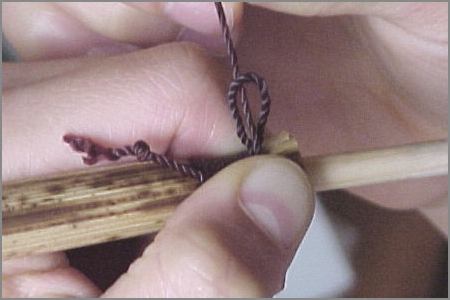
When you've rolled enough, hold everything in place with your thumb, cut the string away from the hook on the bench, and put that end through the loop.
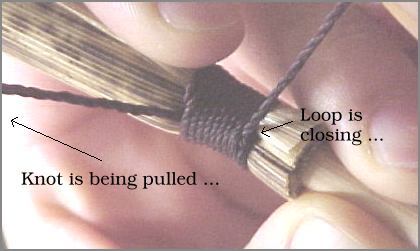
Then pull the knotted end to close the loop. If you've done a good job rolling very tightly, then you might need pliers to pull the loop all the way closed. Once it's closed tightly, trim off the left-over ends of the string.
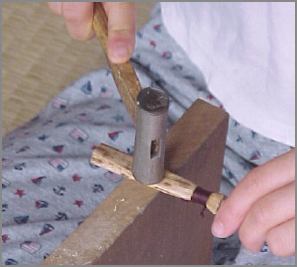
Now comes the noisy part! Dip the bamboo back into the water again for a moment, shake it to remove some water, and then start banging. We do this on the end of a woodblock. When you bang, the bamboo splits up. The skin starts to come off, and the fibres are left behind.

You can see here what happens. Here are a few pointers:
- Don't bang too hard.
- Don't bang over the sharp corner of the wood.
- Roll the hakobi, and move up and down while you bang.
- Be careful not to bang the stick inside.

Stop sometimes and comb out the little bits of loose skin. Do this gently and try not to break the fibres.

Here is a finished one. Please try and make some of these brushes!
